

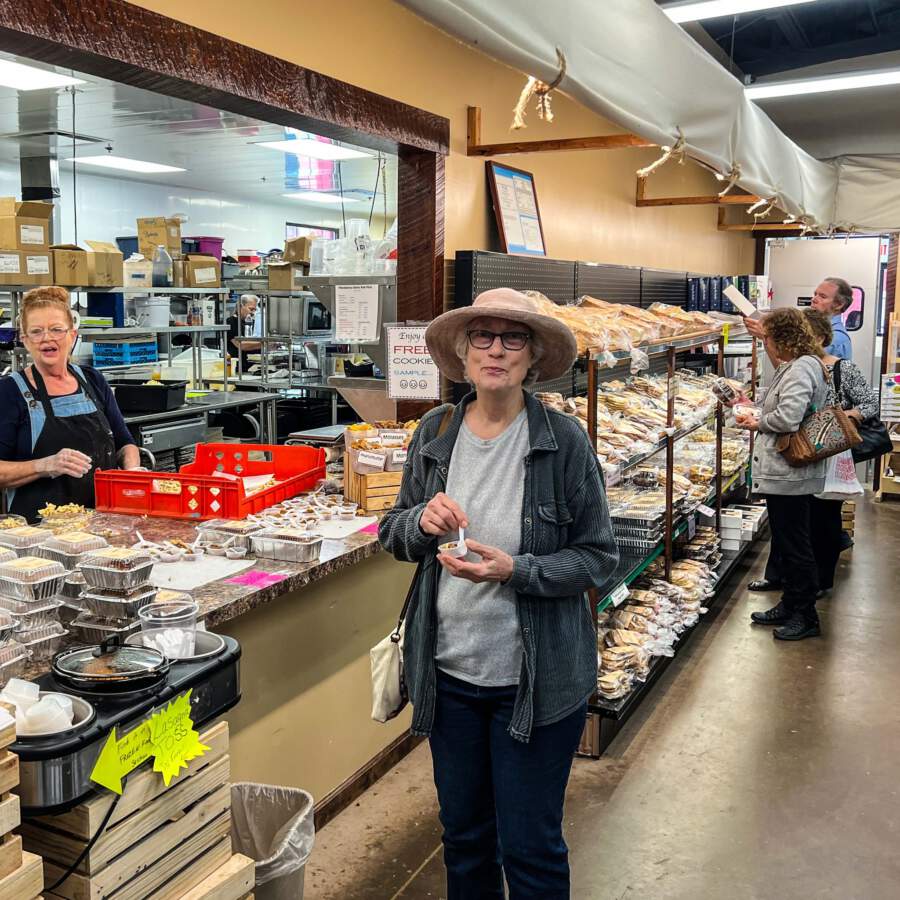
Covered Wagon Farm Market
607 N Main St
Englewood, OH 45322
By Bill Franz



Covered Wagon Farm Market
607 N Main St
Englewood, OH 45322
By Lisa Grigsby
Local businesses said they are starting to see the effects of the furloughs to base employees now more than ever and are doing their best to help those in need. Here’s a few of the places that are stepping up with help:

Neighborhood Nest Owner Amber Tipton “realizes allergy families have it worse that the average family. During the government shut down we realize it will only get tougher the longer it goes on.
The Dayton Foodbank delivered 60 emergency food boxes to Wright-Patterson Air Force Base last week to support furloughed employees affected by the government shutdown. “Time will really tell, especially this week, what the response will be as we get closer to the potential for folks missing a paycheck,” said Lee Truesdale of Dayton Foodbank Inc.
Truesdale mentioned that it is too early to determine if there has been a significant increase in federal workers seeking help from the Foodbank due to the shutdown.
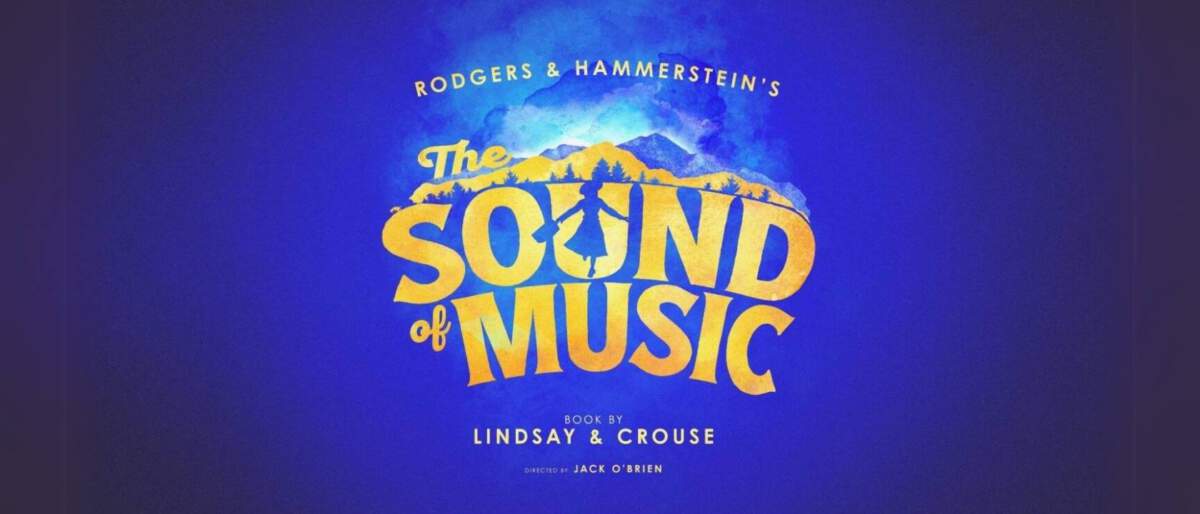
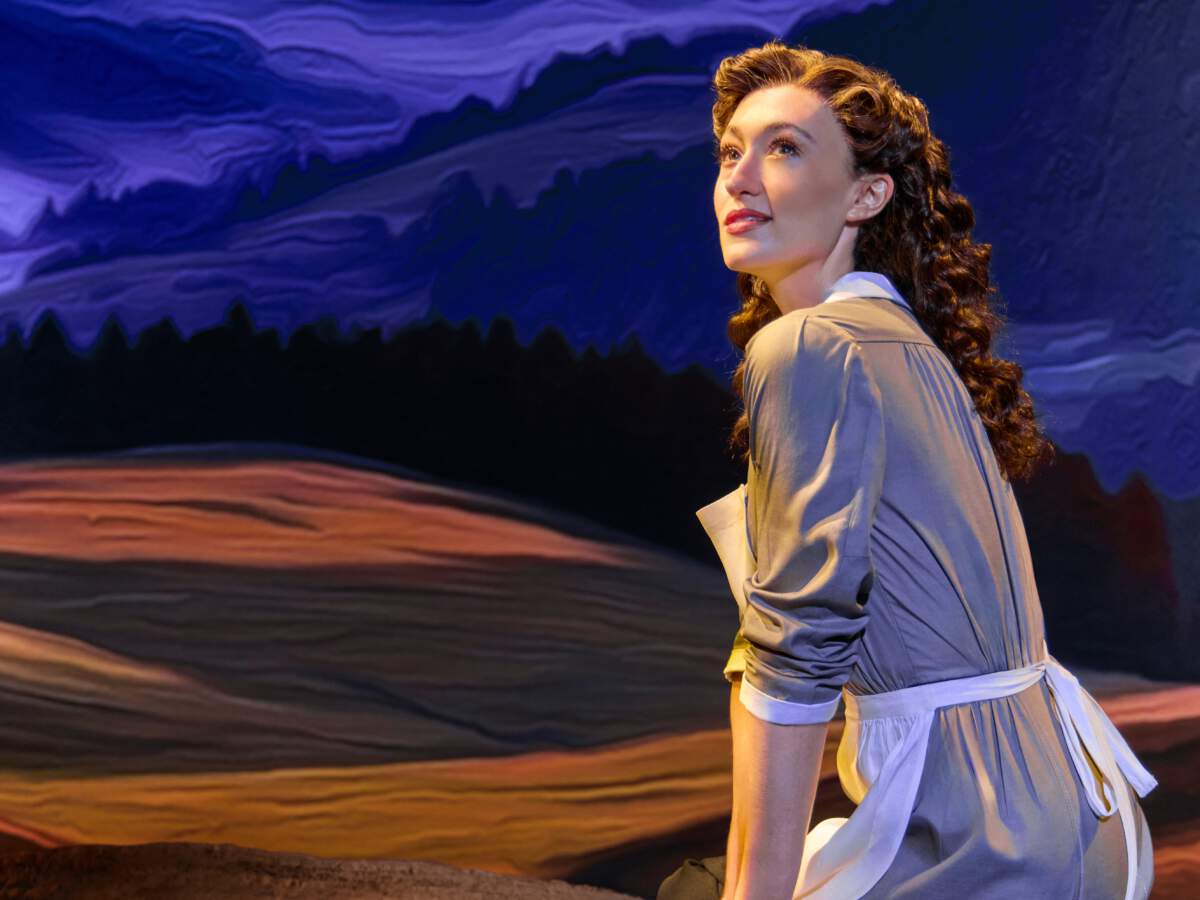 Yes, the show packs what you remember….goat-herders, cuckoo clocks, and an occasional Nazi symbol. What this production is able to do is keep us buoyant and filled with optimism. It can, indeed, be a lesson for our world today.
Yes, the show packs what you remember….goat-herders, cuckoo clocks, and an occasional Nazi symbol. What this production is able to do is keep us buoyant and filled with optimism. It can, indeed, be a lesson for our world today.By Bill Franz
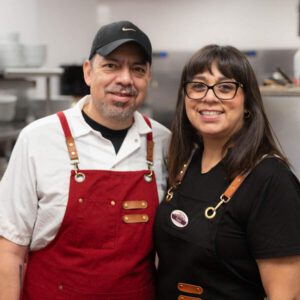
Jose and Carol Calzada, at Culp’s Cafe
Carol told me she and her husband came to the U.S. from Mexico when they were young children. They grew up in Chicago. She said her husband was the chef and had a long background in the industry, having cooked in restaurants around the U.S. and Europe. When they moved to Dayton with their four children, he worked at well-known restaurants like Anticoli’s and l’Auberge.

Dayton, OH 45409
open Tues – Sun 10am – 3pm
By Dayton937
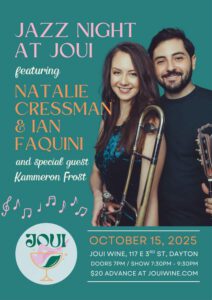 This Wednesday, Dayton music lovers are invited to experience something truly special: an intimate concert featuring the remarkable musical partnership of trombonist and vocalist Natalie Cressman and composer and guitarist Ian Faquini at Joui Wine. Presented by Venus Child Productions, the evening promises an evening of sophisticated jazz, Brazilian grooves, and enchanting vocals that will transport audiences across continents and musical traditions. Local singer and recent Berklee graduate Kammeron Frost opens up this special evening of live music.
This Wednesday, Dayton music lovers are invited to experience something truly special: an intimate concert featuring the remarkable musical partnership of trombonist and vocalist Natalie Cressman and composer and guitarist Ian Faquini at Joui Wine. Presented by Venus Child Productions, the evening promises an evening of sophisticated jazz, Brazilian grooves, and enchanting vocals that will transport audiences across continents and musical traditions. Local singer and recent Berklee graduate Kammeron Frost opens up this special evening of live music.
Though calling Cressman and Faquini a duo understates the depth of their musical collaboration, their partnership represents something far more expansive. Hailing from San Francisco and Brasilia respectively, the two artists have cultivated a singular creative communion that draws from their shared love of the Brazilian songbook, jazz, Impressionism, and sophisticated pop songcraft.
What sets this duo apart is their fearless eclecticism. Their original compositions weave lyrics in Portuguese, French, and English into a rich tapestry of sounds that borrows from multiple stylistic traditions. Accompanied by the warm tones of acoustic guitar and trombone, their sumptuous two-part vocal harmonies create a richly orchestrated sound that belies the intimate duo format, seeming to emanate from a much larger ensemble.
Cressman, a trombonist, vocalist, and songwriter, brings sophisticated melodic sensibility to the ensemble, while Faquini’s composition and guitar work provide both harmonic depth and rhythmic vitality. Together, they’ve created a sound that feels both timeless and contemporary, sophisticated yet deeply soulful.
Join Natalie Cressman and Ian Faquini for an evening of live music this Wednesday, October 15, 2025 at Joui Wine, located at 117 E 3rd St, Dayton, OH. Doors open at 7:00 p.m., with the show running from 7:30 to 9:30 p.m.
Tickets are available for $20 in advance or $25 at the door. This is an event for ages 21 and up.
To learn more about the artists, visit Natalie Cressman’s website
By Dayton937
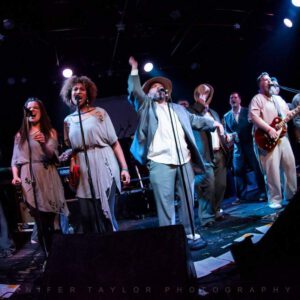
This Must Be the Party!
Get ready to dance. One of Dayton’s most acclaimed musical events is back, and it’s bringing the legendary energy of The Talking Heads to The Brightside‘s Ballroom this October.
This Must Be the Party returns for an all-star musical celebration that features a complete recreation of the iconic Stop Making Sense album, one of rock music’s most beloved records. If you’ve experienced this event before, you know it’s not just a concert—it’s a full-throttle dance party that captures the experimental spirit and infectious groove of David Byrne’s masterpiece.
The evening kicks off with special guests The Nth Power from New York, a trio that brings together an impressive mix of musical talent and diverse backgrounds. Fronting the band is singer and guitarist Nick Cassarino, whose previous work with the Jennifer Hartswick Band and tours with hip-hop legend Big Daddy Kane showcase his versatility across genres.
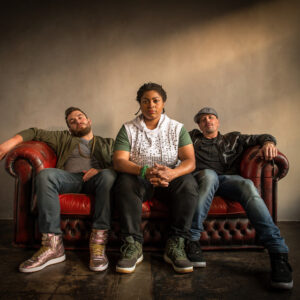 On bass is Nate Edgar, whose credits include the bands Groovechild and John Brown’s Body, providing the low-end foundation for the group’s groovy sound. Completing the trio is drummer Nikki Glaspie, a powerhouse musician who spent five years as Beyoncé’s world-touring drummer before joining Ivan Neville’s New Orleans funk outfit, Dumpstaphunk.
On bass is Nate Edgar, whose credits include the bands Groovechild and John Brown’s Body, providing the low-end foundation for the group’s groovy sound. Completing the trio is drummer Nikki Glaspie, a powerhouse musician who spent five years as Beyoncé’s world-touring drummer before joining Ivan Neville’s New Orleans funk outfit, Dumpstaphunk.
Together, The Nth Power demonstrates that great music knows no boundaries—bringing together artists from jazz, funk, hip-hop, and rock traditions into one unified sound.
Date: October 10, 2025
Venue: The Brightside (905 E 3rd St., Dayton, OH)
Doors: 7:00 PM | Show Starts: 8:00 PM
Tickets:
 Get tickets here: https://tickets.venuepilot.com/e/this-must-be-the-party-with-special-guests-the-nth-power-2025-10-10-the-brightside-music-event-venue–9dcc83
Get tickets here: https://tickets.venuepilot.com/e/this-must-be-the-party-with-special-guests-the-nth-power-2025-10-10-the-brightside-music-event-venue–9dcc83
All ages are welcome, though patrons under 18 will need parental supervision. Those 21 and over should bring valid ID if they wish to purchase beverages.
A heads-up for attendees: this is a standing show with limited seating available for those who need it. This is a dance party, so comfortable shoes are highly recommended—you’ll want to be able to move freely as the music takes you on a journey through one of the greatest albums ever made!
By Lisa Grigsby

Perfect for kids, parents, and even grandparents — this is Halloween re-imagined as a night of laughter, adventure, and surprises !Best for children 4+, but all ages welcome. All parking FREE including Handicapped. Doors open 15 minutes before event start
Also included is your choice of tea, lemonade or water.
If you have an allergy, please email them so they can discuss options for you

On the map it’s a warehouse,
but inside it’s Blackwood Manor.
By Dayton937
Clothes That Work is a nonprofit organization providing workforce education and professional or workwear attire to job seekers in the Miami Valley. Clothes That Work relies on the generosity of the community to help outfit clients for their upcoming interviews and work placements.

Volunteers are essential to Clothes That Work, with four different ways to engage:
Clothes That Work offers flexible hours; and volunteers are trained in their positions, to ensure that clients receive top quality services.
To sign up for a volunteering opportunity, visit https://www.clothesthatwork.org/volunteer-form/
For more on volunteering opportunities, visit www.ClothesThatWork.org/get-involved
2824 Wilmington Pike
Kettering, OH 45419
937.222.3778
By Lisa Grigsby
The earliest version of an official Taco Day originated in San Antonio in the 1960s, according to L.A. Taco, when a city councilman named Roberto L. Gomez promoted a Taco Day as part of Mexican heritage celebrations — a community effort to recognize the cultural impact of tacos.
Over time, other cities adopted it, and eventually, big fast-food chains piggybacked on the idea and began using October 4 as the unofficial date. However, in 2024, Taco Bell partnered with National Day Calendar to officially move National Taco Day to the first Tuesday in October, aligning it with Taco Tuesday.
Bubbakoo’s Burritos:Through Oct. 7 loyalty members can enjoy a buy one, get one free deal on the chain’s Dos Tacos entrée.

Sonora Grill seafood steak bar: Delicious tacos, unbeatable flavors, and an amazing atmosphere await you. Hard shelled tacos just $1.99
By Bill Franz



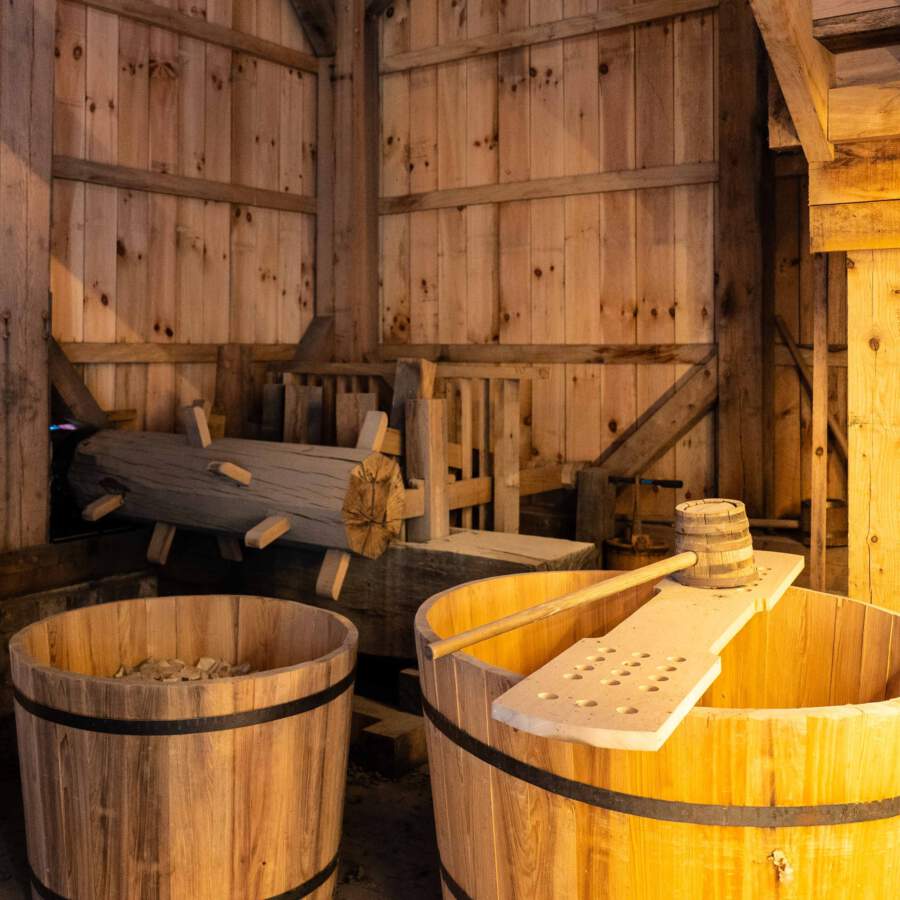
By Y. K. Cuts
 TheatreLab Dayton announced their season a week or so ago. Titled ‘Threads,’ TheatreLab is hoping to expand on its connection to the community and its drive to be unique in its 2025-26 season.
TheatreLab Dayton announced their season a week or so ago. Titled ‘Threads,’ TheatreLab is hoping to expand on its connection to the community and its drive to be unique in its 2025-26 season.

 Drennen piped in, ‘We’ve also got some really fun events planned this season, things like trivia nights, karaoke, and of course all of our usual pre-show parties. And beyond the shows themselves, we’re expanding our volunteer base, so there are lots of ways for people to support and get involved with TheatreLab. It’s really about building community, both onstage and off!’
Drennen piped in, ‘We’ve also got some really fun events planned this season, things like trivia nights, karaoke, and of course all of our usual pre-show parties. And beyond the shows themselves, we’re expanding our volunteer base, so there are lots of ways for people to support and get involved with TheatreLab. It’s really about building community, both onstage and off!’By Dayton937
 The Board of Trustees of the Dayton Art Institute, with deep appreciation and gratitude, announces that Michael R. Roediger will be stepping down from his role as Director & President on Friday, October 31, 2025. Michael has loyally served the museum for 14 years and will leave a legacy of servant leadership and a dedication to inclusion, diversity, equity and accessibility. He has also fostered the care of his team, strong relationships, community service and an extraordinary commitment to making the collection more inclusive of marginalized artists.
The Board of Trustees of the Dayton Art Institute, with deep appreciation and gratitude, announces that Michael R. Roediger will be stepping down from his role as Director & President on Friday, October 31, 2025. Michael has loyally served the museum for 14 years and will leave a legacy of servant leadership and a dedication to inclusion, diversity, equity and accessibility. He has also fostered the care of his team, strong relationships, community service and an extraordinary commitment to making the collection more inclusive of marginalized artists.
Michael is a member of the Association of Art Museum Directors and is the first Director to be born and raised in Dayton. In his time at the DAI, he has led the organization in the retiring of $16 million in debt and raised an additional $19 million in capital and endowment funding. He has overseen the renovation of the museum’s historic grand staircases, fountains, galleries, the Rose Auditorium and the education floor, as well as making the museum more accessible for guests with different abilities. In addition, with his oversight, the DAI has worked to have numerous works conserved for the preservation of the collection for generations to come.
Michael’s deep commitment to community shines through the honors he’s earned. In 2024, the National Conference for Community and Justice presented him with its Humanitarian Award for championing inclusion, diversity, equity and accessibility both at DAI and beyond. In addition, the Greater Dayton Region Chapter of the Association of Fundraising Professionals named him Outstanding Fundraising Executive, one of many distinctions that testify not only to his impact on the museum, but to the vibrant, welcoming community his leadership has helped to create.
 “Leading the DAI has been a privilege and a highlight of my career. The staff are incredible, and the collection is one of the finest in the country if not the world. I will miss my DAI family, but I will be cheering them on from the sidelines,” said Michael.
“Leading the DAI has been a privilege and a highlight of my career. The staff are incredible, and the collection is one of the finest in the country if not the world. I will miss my DAI family, but I will be cheering them on from the sidelines,” said Michael.
Michael is leaving to pursue other opportunities and to honor the Dayton Art Institute, per his request, there will be no farewell celebration. Rather, he requests gifts be made to the museum in his honor. For more information about donating, contact Membership & Individual Giving Officer Kaytee Yantis-Houser, at [email protected] or 937-223-5277, ext. 264.
As we begin our next chapter, Michael’s deep institutional expertise and wide-ranging industry contacts will remain invaluable. His collaborative nature, fundraising prowess and unwavering dedication to our mission have set the groundwork for everything we will build moving forward.
Mark Shaker, Vice Chair of the Board of Trustees, will function as the Interim Director and President. As the former President and CEO of Miami Valley Hospital, Mark brings a wealth of leadership knowledge and experience to the DAI during this transition. Together, we will build on a strong heritage as we plan for the next chapter for one of Dayton, Ohio’s most treasured institutions for generations to come.
By Dayton937
See It. Taste It. Crunch It. Cheez-It® is unleashing its biggest innovation in three years, something unlike anything fans have ever crunched before. Enter Cheez-It Crunch, a bold new snack lineup that combines 100% real cheese with a more satisfying crunch and a 3D shape designed to deliver edge-to-edge bold flavor in every bite. The new innovation will begin rolling out in October, with the Kick’n Nacho Cheese and Zesty Jalapeño Cheddar Cheez-It Crunch set to hit stores first.. Following the soft launch this fall, Cheez-It Crunch Sharp White Cheddar and full-sized bags of all three varieties will be available on the shelves of major retailers nationwide beginning in January.
Cheez-It recognizes the shift toward sensory snacking experiences – a trend confirmed by a 55% increase in crunchy snack social videos over the past year1. Cheez-It Crunch answers that demand with three new irresistible, multisensorial flavors that satisfy cravings anytime, anywhere.
“We’ve taken everything fans love about the original Cheez-It cracker and reimagined it with a new, irresistible snacking experience,” said Cara Tragseiler, Senior Brand Director for Cheez-It. “As the name indicates, Cheez-It Crunch has a bold, craveable crunch, delivering a satisfying bite and making it a must-have for all snack lovers.”
Cheez-It Crunch comes in three deliciously daring flavors, each made with 100% real cheese:
Fans can get an early taste starting in October when Cheez-It Crunch Kick’n Nacho Cheese and Cheez-It Crunch Zesty Jalapeno Cheddar hit 7-Eleven stores in single-serve, 2.25oz bags for an MSRP of $2.79. In January 2026, these two flavors, plus the Cheez-It Crunch Sharp White Cheddar flavor, will roll out at retailers nationwide in full-size, 6.5oz bags sold for an MSRP of $4.49.
By Lisa Grigsby
Panera Bread is celebrating the flavors of fall with a lineup of comforting, crave-worthy dishes, available at cafes nationwide.
At the heart of the menu is the Fall for Your Favorites Meal, featuring the return of three signature soups perfect for the season, including Black Bean Soup, a beloved classic making its comeback by guest demand after seven years. To celebrate the revival of cozy seasonal rituals, Panera has launched a new campaign starring Gilmore Girls stars Jared Padalecki and Matt Czuchry, a duo forever tied to small-town charm, endless coffee refills, and one of television’s most beloved fall rewatches.

Panera’s fall menu includes:

Much like a warm bowl of soup, nostalgic TV marathons are a cherished hallmark of fall. In Panera’s new digital campaign, actors Jared Padalecki and Matt Czuchry reunite to highlight the personalities of Panera’s iconic soup lineup – each variety reflecting the traits of a different kind of “favorite.” Fireside Chili is the dependable classic, Autumn Squash Soup the sophisticated choice, and Black Bean Soup the brooding favorite making a long-awaited comeback after seven years. Together, these flavors anchor the Fall for Your Favorites Meal, proving that nothing pairs better with cozy traditions than the return of a true fan favorite.
“Fall is one of our favorite seasons at Panera, when we get to spotlight warm, comforting classics alongside fresh, seasonal flavors,” said Mark Shambura, Chief Marketing Officer, Panera Bread. “This year, we’re celebrating not just with the return of guest-favorite soups, but also with playful content that personifies them in a way fans will instantly recognize. It’s all about delivering the cozy, craveable flavors our guests love – and yes, that includes the long-awaited return of Black Bean Soup.”
By Bill Franz
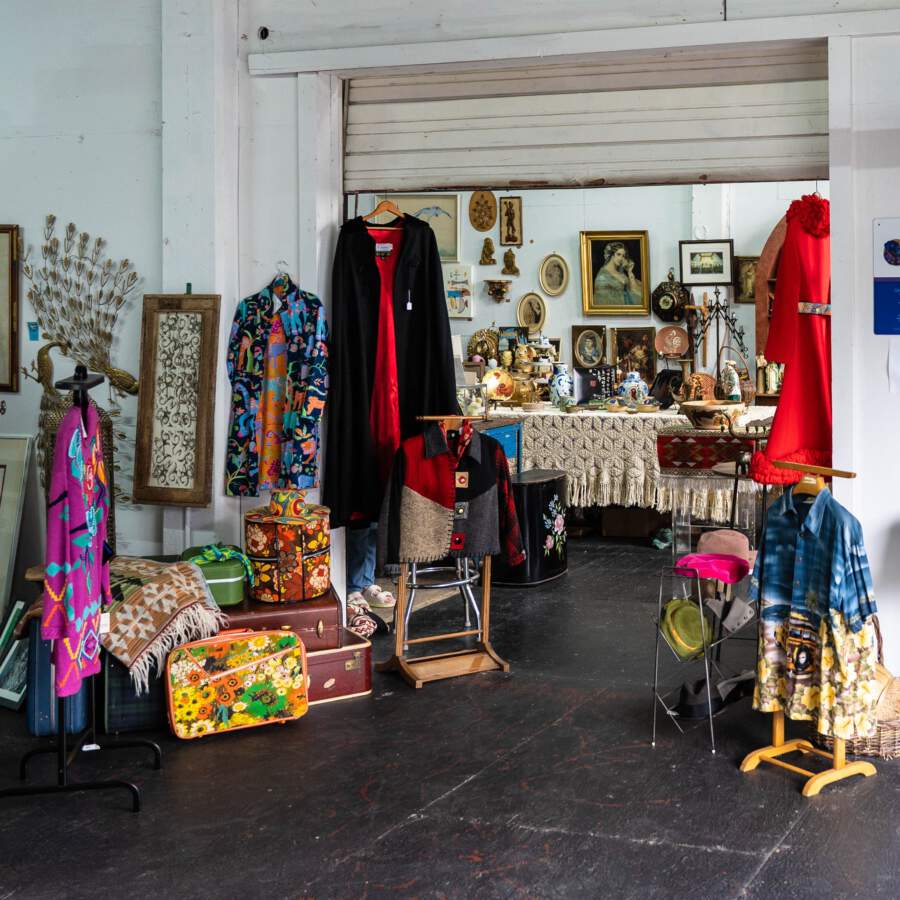


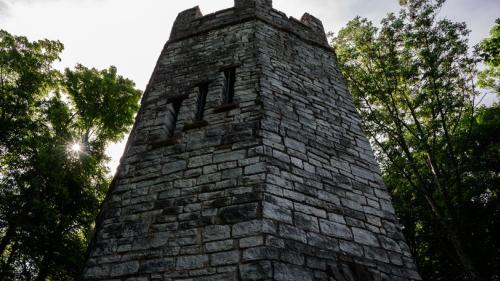
Even the name has been a mystery – over the years, Hills and Dales Lookout Tower has been known as Witches Tower, Frankenstein’s Castle and Patterson Tower. Constructed in 1941 with the purpose of offering picturesque views of the Community Country Club, the 30-foot-tall tower was assembled over the course of a year by individuals working under the National Youth Administration. They utilized salvaged stone to bring the impressive structure to life.
The most well-known, tragic story unfolds with the passing of Peggy Harmeson, a 16-year-old resident of Bellbrook. In 1967, during a fateful thunderstorm, she and her companion, 17-year-old Ronnie Stevens, sought refuge inside the tower as the rain raged on. Tragically, Harmeson lost her life inside the tower when it was struck by lightning. Her lifeless body was discovered on the 11th step, marred by severe burns, while Stevens, was overwhelmed with shock so much so that he was restrained when responders arrived.
Legend has it that after those events unfolded, visitors reported discovering scorched images of the girl within the tower and despite all efforts to scrub them away, the stains persisted on the walls. A ghostly girl and boy are said to appear at the site whenever lightning illuminates the sky. The tower entrance is now securely sealed with concrete but continues to beckon those inquisitive enough.
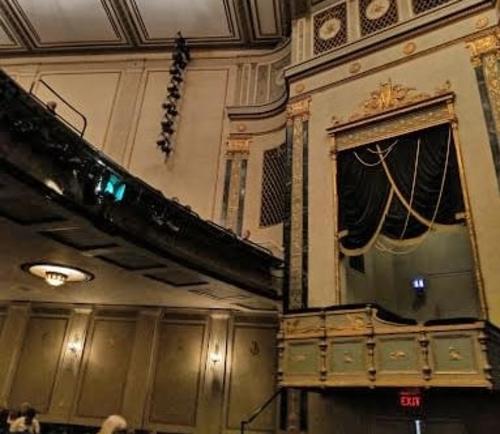
Beyond the captivating performances that grace the stage at the Victoria Theatre, a tapestry of events has woven its way through the theatre’s 150-year history. Among the most mystifying tales dates back to the early 1900s, when an actress affectionately known as ‘Vicky’ made her exit from the stage, bound for her dressing room to prepare for the next scene, yet never returned. To this day, her presence occasionally graces the theater, leaving behind the subtle and sweet scent of rose perfume. The echoes of her footsteps and the gentle rustling of her petticoat have also been known to hurry across the stage.
Also, within the walls of the theatre, in the 1950s, a haunting incident unfolded as a man tragically took his own life by plunging onto a knife lodged within one of the theater’s seats. His apparition has since manifested on the theatre’s curtain numerous times, as a reminder of that fateful day.
Adding to the odd mysteries, reports of a woman encountering a physical assault within a private box have surfaced. Following that, in the same box, a male visitor has claimed to have been struck so forcefully by an unseen female presence that it left a mark, further fueling the theatre’s uncanny vibe.
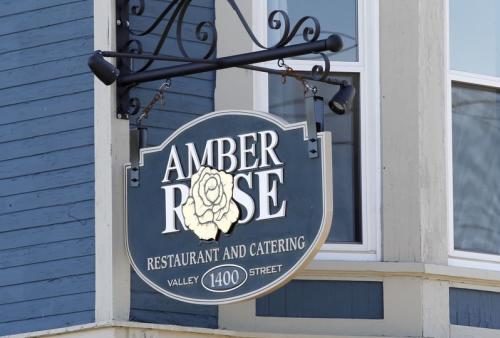
The Amber Rose is home to homemade Eastern European Cuisine that includes German, Lithuanian, Polish, Hungarian, Russian and Italian dishes. However, the building was originally built by Sigmund Ksiezopolski in 1910 to serve its purpose as a general store. The building suffered a fire and was reconstructed by new owners, in 1990 when it transformed into The Amber Rose.
The fire, even so, did not take with it the spirit of the original owner’s daughter, Genevieve. Genevieve, also known as “Chickee”, spent most of her time in the attic at her father’s old store that she loved so dearly. Customers have since spotted a female with long black hair in the attic window. Staff members have also recounted witnessing inexplicable occurrences, from glasses mysteriously taking flight off the shelves to lights flickering on and off and hearing strange laughter or her sweet singing.
If you happen to choose to dine at The Amber Rose, you may just spot a figure in the bathroom mirror and turn around to find no one behind you.

Not far from the Woodland Avenue entrance of the cemetery is a renowned gravestone known as “The Boy & Dog” memorializes the resting place of young Johnny Morehouse, who passed away on August 14, 1860.
Legend has it that Johnny was frolicking alongside the Dayton canal with his ever-loyal companion and closest friend, his faithful dog. Tragedy struck when Johnny accidentally slipped into the canal’s waters. His loyal canine made valiant attempts to rescue him, but despite its efforts, by the time Johnny was retrieved from the water, it was too late. In the days following the boy’s funeral, the devoted dog paid a visit to the gravesite staying there morning, noon and night, surviving off of small offerings of food from mourners until his own eventual death.
Some have said that if you are to place your hand under the nostrils of the dog portion of the monument, that it seems to breathe; you’ll feel the unearthly sensation. Tales are told of the child and the faithful dog wandering the cemetery grounds, spooking nearby neighbors, under the veil of the night.
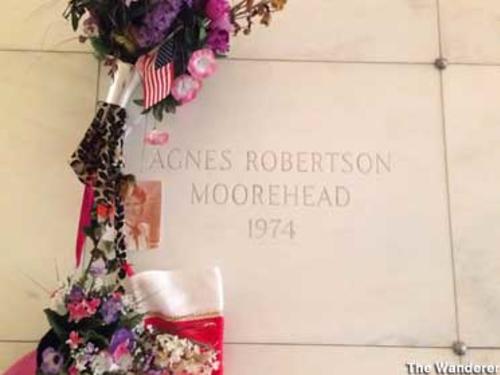
Agnes Moorehead, an American actress is acclaimed for her iconic portrayal of the character Endora, a witch, in the television series Bewitched. In her role as Samantha’s overbearing mother, Endora proved to be a constant source of exasperation for the unfortunate Darrin, frequently materializing and vanishing within his suburban abode, often leading to magical mishaps.
Moorehead appeared onstage early on in her career, making her first appearance when she was just 10 years old. Though saddened by her passing, she worked until the very end, ending her career on the Broadway stage. Now, Dayton is honored to be the ground on which her memorial lies, being that it was the last pastoral assignment of her father.
While not as ‘haunting’ of a site as the aforementioned locations, should you choose to visit Ms. Moorehead, the expansive Memorial Abbey structure situated at the rear of Dayton Memorial Gardens is her final resting place. Upon entering through the front door, use the staircase, and you’ll find yourself in the first corridor on the left, known as the Sanctuary of Peace. It’s a serene and hushed environment, with a convenient bench positioned directly in front of her crypt: Ms. Moorehead is seven rows over and three rows up.
Post was written and originally appears on the Destination Dayton blog.